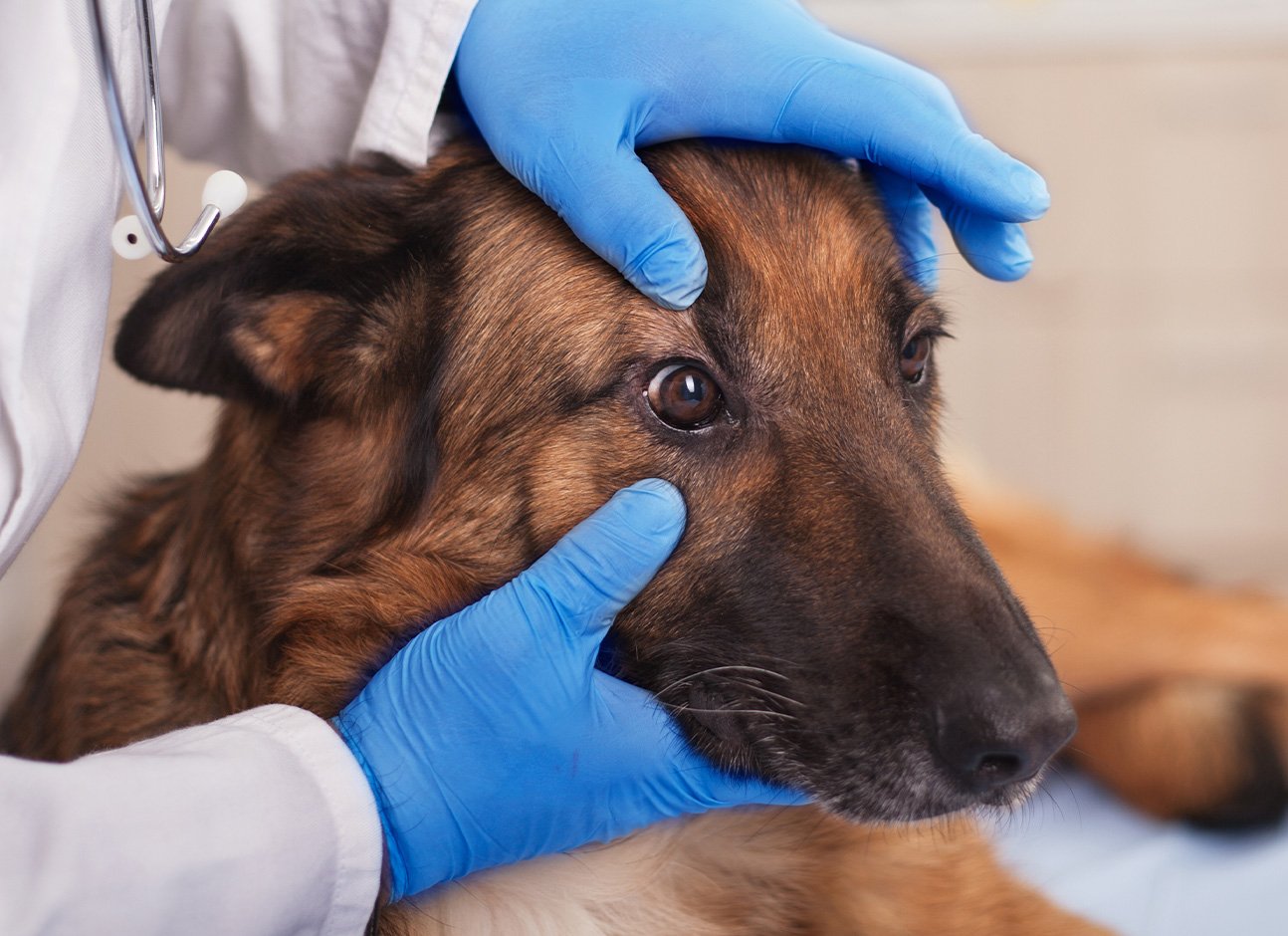Glaucoma is the accumulation of fluid in the eye which puts increased pressure on it, eventually leading to loss of vision. Just like humans, dogs can also develop glaucoma. There are two kinds of glaucoma, namely primary glaucoma and secondary glaucoma. Primary glaucoma occurs as a result of a buildup of fluid in the eye. Secondary glaucoma, on the other hand, is caused by the increased intraocular pressure resulting from an eye injury or disease.
The most common causes of canine glaucoma include uveitis (inflammation inside the eye), tumor(s), damaged lens, etc. The anterior dislocation of the lens which involves the lens falling forward and obstructing the drainage of fluid in the eye, resulting in fluid accumulation can also cause glaucoma. Additionally, the presence of blood clot as a result of bleeding the eye can block fluid drainage, and contribute to glaucoma in dogs.
Some signs of glaucoma include eye pain, watery eye discharge, swelling of the eye, redness, and intolerance of light. Your dog may express their pain by rubbing their eye with their paw, or may shy away from your touch or pats to the head. Certain dog breeds are more prone to glaucoma than other canine breeds. Akita Dalmatian, Norwegian Elkhound, Alaskan Malamute, English Cocker Spaniel Poodle, American Cocker Spaniel, and Samoyed are some of the dog breeds that are more predisposed to glaucoma than the rest.
Early detection is the most effective way to deal with canine glaucoma as it opens up more avenues for treatment in order to prevent permanent damage to the eye. Analgesic medications can be prescribed to help your dog manage the pain. It is also important to treat the conditions that cause secondary glaucoma, for example, an eye disease or an injury sustained to the eye. Glaucoma requires regular visits to the veterinary ophthalmologist for follow-up examinations. Taking your dog for regular health checks can help detect a possible case of glaucoma early on.
